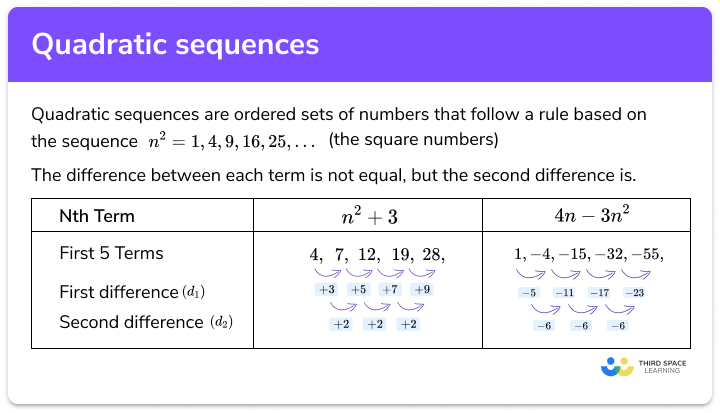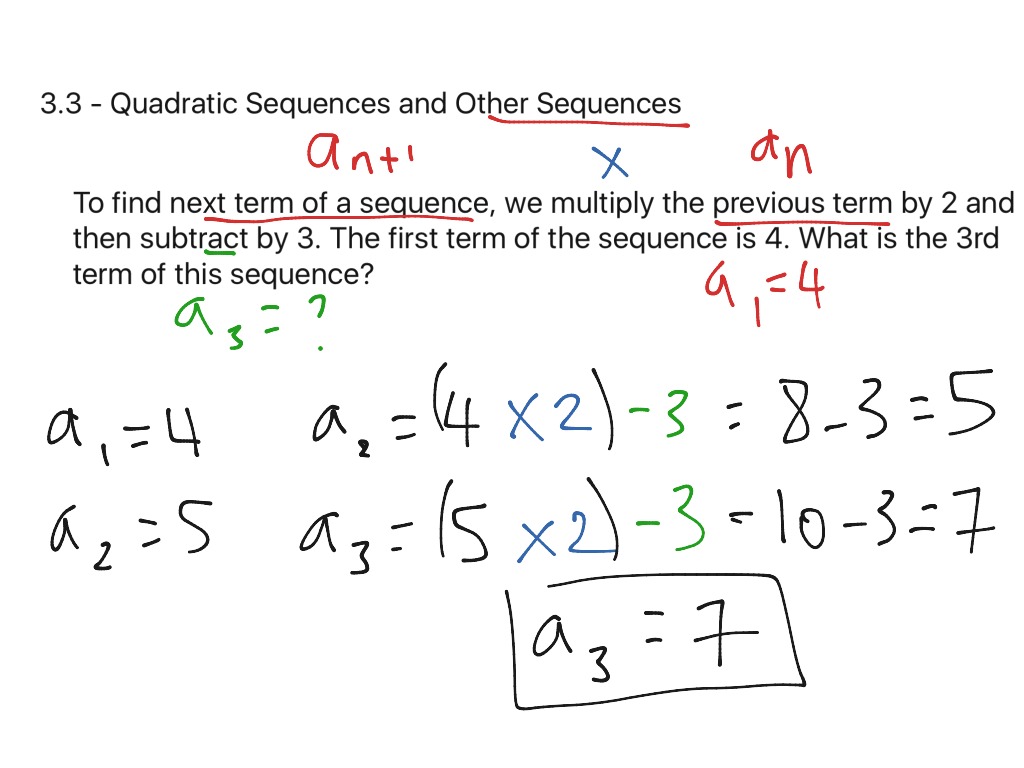
The coefficient of \(n^2\) is half the second difference, which is 2.

The second difference is the same so the sequence is quadratic and will contain an \(n^2\) term. Work out the \(n\) th term of the sequence 5, 11, 21, 35. The \(n\) th term of this sequence is therefore \(n^2 + 1\). In this example, you need to add 1 to \(n^2\) to match the sequence. To work out the \(n\) th term of the sequence, write out the numbers in the sequence \(n^2\) and compare this sequence with the sequence in the question. Half of 2 is 1, so the coefficient of \(n^2\) is 1. In this example, the second difference is 2. The coefficient of \(n^2\) is always half of the second difference. The sequence is quadratic and will contain an \(n^2\) term. The first differences are not the same, so work out the second differences. Work out the first differences between the terms. Work out the \(nth\) term of the sequence 2, 5, 10, 17, 26. The first five terms of the sequence: \(n^2 + 3n - 5\) are -1, 5, 13, 23, 35 Finding the nth term of a quadratic Example 1 Write the first five terms of the sequence \(n^2 + 3n - 5\). Terms of a quadratic sequence can be worked out in the same way. The \(n\) th term for a quadratic sequence has a term that contains \(n^2\). They can be identified by the fact that the differences between the terms are not equal, but the second differences between terms are equal. Quadratic sequences are sequences that include an \(n^2\) term. The 10th term is \(2 \times 1.2^9= 10.Finding the nth term of quadratic sequences - Higher Show that the sequence 3, 6, 12, 24, … is a geometric sequence, and find the next three terms.ĭividing each term by the previous term gives the same value: \(\frac\) This value is called the common ratio, r, which can be worked out by dividing one term by the previous term. In a geometric sequence, the term to term rule is to multiply or divide by the same value. The sequence will contain \(2n^2\), so use this: \ Work out the nth term of the sequence 5, 11, 21, 35. In this example, you need to add \(1\) to \(n^2\) to match the sequence. To work out the nth term of the sequence, write out the numbers in the sequence \(n^2\) and compare this sequence with the sequence in the question.

Work out the nth term of the sequence 2, 5, 10, 17, 26. They can be identified by the fact that the differences in-between the terms are not equal, but the second differences between terms are equal. Finding the nth term of quadratic sequences - Higher


 0 kommentar(er)
0 kommentar(er)
